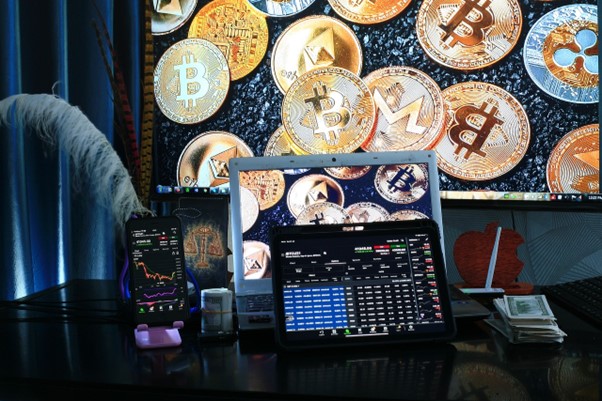Cryptocurrencies have their fair share of fans and an equal number of detractors, so it can be quite confusing to know where financial society stands on the matter.
Recently both Donald Trump and Elon Musk have been reported as being fans of the digital assets. Trump said,
“I’m good with it,”
When asked if his campaign funds would accept Bitcoin despite calling crypto out as a scam when he was in The White House. Around the same time, Musk claimed that the US Dollar was about to collapse due to Bitcoin. His pronouncement saw the digital currency’s price rally by 15% after crashing the previous week. However, whether these two endorsements of crypto are a good or a bad thing, in the long run, is debatable, as opinions on these two men are as split as those on the blockchain currency.
While it is undeniable that both of these men are monumentally wealthy, there is no doubt that both of them have made some serious errors of judgment. It is easy for them to be bullish when they have substantial assets behind them. In fact, it could easily be argued that with their platforms, they can talk up confidence in crypto to their own advantage. As far back as 2021, Musk was described as Bitcoin’s biggest influencer, and that was before he acquired Twitter as a private mouthpiece.
If you google crypto assets and are looking for an answer, you can end up very confused. Recently, the UK announced it was planning to become a global crypto hub and set out plans to regulate the industry. While that could see crypto moving into the mainstream, purists would argue that it destroys the point of the currency, which is decentralised and outside the control of nation-states and central banks.
There is a growing belief that digital assets will become more embedded in the financial system. Digital assets include cryptocurrencies, non-fungible tokens, stablecoins, and central bank digital currencies (CBDCs). Crypto essentially means that the asset is digitally secured by cryptography, which primarily exists on decentralised networks and is created by blockchain technology enforced by a disparate network of computers.
Bitcoin was the first currency to be created in this way, and it is still the most well-known currency. For many, its name is interchangeable with the technology – however, over 8,000 active cryptocurrencies exist. Bitcoin has been around since 2009, and in November 2023, it had a market capitalisation worth around £555 billion. However, prices are volatile, so it is almost impossible to give an accurate figure.
The use of crypto assets has expanded and there has been lots of talk around NFTs being used to create unique pieces of art. Where the art world leads, other sectors often follow. Damien Hirst recently created a limited edition print series and gave buyers the choice of a real piece of art or an NFT. Always out to shock, he burned the originals that had been bought as NFTs at the end of the exhibition. Hirst’s series of 10,000 artworks saw 4,851 people choose the NFT and 5,149 trading their digital asset for a physical artwork.
The art market has always been a bit of a gamble, but Hirst’s is a name that has become incredibly collectable over the years. However, it is not only the art world that has adapted to crypto.
There are a growing number of places and online stores where customers can complete their purchases using blockchain currency. PayPal’s BitPay site details over 250 stores and companies where buyers can spend crypto from any wallet. Online casinos are another example of a sector where customers can often choose to pay with a crypto asset. There are a growing number of online casinos where gamblers can fund their casino account in this way. However, they are unregulated and, therefore, not recommended. Anyone wanting to find a real money UK online casino can compare all the options on a site like casino.org/uk/, safe in the knowledge they are legal and regulated. Unfortunately, there are very few options like this for cryptocurrency casinos, due to their unregulated nature.
Meanwhile, in January, the US made the long-awaited decision for Bitcoin to be part of mainstream investing funds, meaning it can be purchased by anyone from ordinary investors to pension funds. This could affect what happens in the UK and allow investors to gain exposure to Bitcoin without owning it directly. Who knows, this could create a significant wave of interest and BlackRock, Fidelity, Ark Invest and Invesco have filed applications for a Bitcoin Exchange Trade Fund.
This leads to a growing belief that digital assets will move into the mainstream due to their perceived benefits over traditional assets. The benefits include lower costs, improved settlement and liquidity, easy, quick access and transparency. Because these digital assets only exist as a digital entity and are not backed by off-ledger assets, they are considerably less complex than conventional assets.
However, their volatility has created a negative perception of digital assets. The G7 intends to bring collateralised stablecoins within its regulatory scope, and this is the asset class that the UK Treasury hopes to regulate as it seeks to increase oversight in the market.
Dubbed the ‘Britcoin’, the Bank of England says the digital pound would be like a digital form of cash and has described it as a banknote for the digital era. Many have been predicting that regulatory bodies will enact a framework for some time now, partly to make sure they’re in early enough, and also to investor protection and the promotion of innovation. They say no decision has yet been reached, and any decision on its issue would not be made until the second half of the decade. However, that is not that far away, and they are in the design phase to better understand the technology and policy requirements. They say they will also be testing it to see how it would work in the real world. If the Bank of England were to issue such an asset, the technology would indeed be fully embedded in financial society.
As with many areas of technology, ideas and products that are niche and on the margins for years can suddenly become mainstream. The question always is, where is the tipping point?


